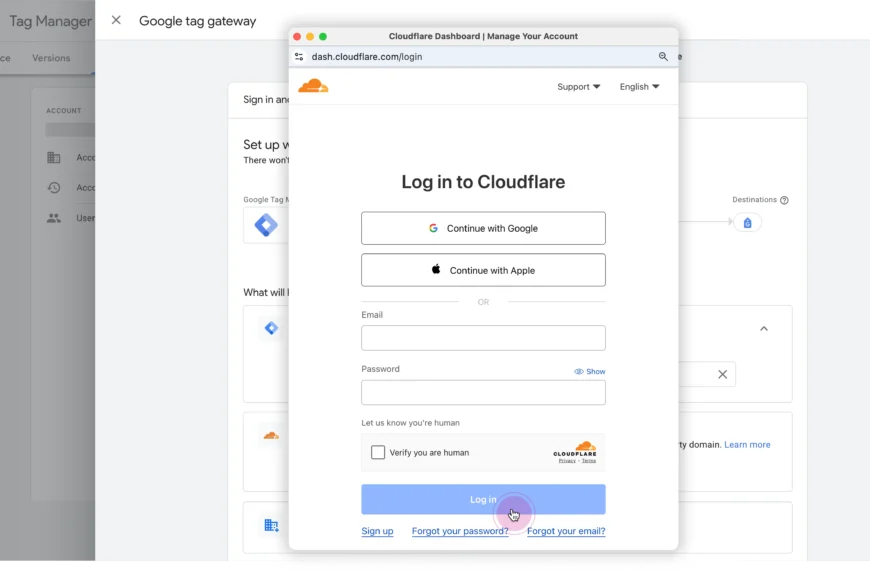Last updated on May 14th, 2025 at 04:52 pm
Chicken rearing is an increasingly popular and potentially lucrative venture for Kenyan farmers and entrepreneurs. Due to the rising demand for poultry products, those interested in agribusiness are asking, “How profitable is chicken rearing in Kenya?“
In this blog post, we’ll dive deep into this question, exploring:
- Types of Chicken Farming in Kenya
- Key Factors Affecting Profitability
- Costs Involved
- Potential Income
- Tips for Success
? Search now. Secure instantly. No delays.
Let’s get started!
Types of Chicken Farming in Kenya
Chicken rearing in Kenya comes in various forms. Understanding them is crucial before asking “how profitable is chicken rearing in Kenya“:
- Broiler Farming
- Focuses on raising fast-growing meat chickens like Cobb 500, Ross 308, and Hubbard.
- Intensive management: birds are raised in controlled environments to reach optimal slaughter weight in 6-8 weeks.
- High demand for chicken meat makes it a potentially profitable system.
- Layer Farming
- Primarily for egg production, using breeds like ISA Brown, Lohmann, Hy-line, and Shaver.
- Layers are managed to maximize egg output, starting laying around 18-20 weeks old.
- Consistent demand for eggs in both urban and rural areas offers market reliability.
- Kienyeji Farming (Traditional Free-Range)
- Involves indigenous chicken breeds roaming freely, scavenging for food and requiring minimal management.
- Kienyeji chickens are valued for their distinct flavor and often fetch premium prices.
- Lower input costs, but growth rates and egg production can be less consistent.
- Improved Kienyeji Farming
- Focuses on crossbred chickens like the KARI Improved Kienyeji developed for better performance than pure indigenous breeds.
- Birds are often raised in semi-intensive systems, with supplementary feeding and improved housing.
- Balances the hardiness and flavor demand of Kienyeji with faster growth and higher egg production.
- Other Specialized Poultry Farming: While less widespread, farmers in Kenya may also engage in:
- Kuroiler Farming: Uses a dual-purpose breed (Kuroiler) developed in India, for both eggs and meat
- Duck, Turkey, Quail, and Guinea Fowl Farming: Raising alternative poultry species to cater to niche markets.
Choosing the Right Type for You
When deciding on a chicken farming model in Kenya, consider the following:
- Market Availability and Demand: Analyze which chicken products (meat, eggs, and specific breeds) are in high demand in your target area.
- Initial Investment: Broiler and layer farming can require higher initial investments for specialized housing and equipment.
- Management Expertise: Intensive farming of broilers or layers demands more dedicated management practices than free-range systems.
- Land Availability: Free-range Kienyeji farming requires more land compared to intensive broiler or layer housing.
Remember: Many successful Kenyan farmers combine different types (e.g., raising broilers alongside some Kienyeji) to diversify their poultry business and income sources.
Factors Affecting the Profitability of Chicken Rearing in Kenya
When trying to determine “how profitable is chicken rearing in Kenya,” consider these key factors:
- Market Demand: Availability of a reliable market for your chickens or eggs is essential. Urban areas tend to have higher demand and better prices.
- Farm Management: Your management practices significantly affect profitability. Proper housing, feeding, disease prevention, and biosecurity are non-negotiables.
- Breed Selection: Choose breeds suitable to your target market (meat vs. eggs) and suited to local conditions.
- Cost of Inputs: Feed accounts for a substantial portion of costs. Explore ways to manage feed costs without sacrificing quality.
- Value Addition: Selling processed products (dressed chickens, smoked meat, etc.) or fertilized eggs can increase your earnings.
Costs Involved in Chicken Rearing
Before figuring out how profitable chicken rearing in Kenya is for you, consider these primary expenses. Please note that prices can fluctuate depending on location, supplier, and market conditions.
Costs Involved in Chicken Rearing
Chicks:
- Broiler chicks: Ksh 80 – Ksh 120 each
- Layer chicks: Ksh 100 – Ksh 150 each
- Kienyeji chicks: Ksh 100 – Ksh 200 each
- Improved Kienyeji chicks: Ksh 120 – Ksh 200 each
Housing:
Cost depends significantly on size, materials, and whether you construct it yourself or hire labor.
For a small-scale, free-range setup, costs may be minimal.
A basic constructed house for 100 broilers could range from Ksh 15,000 – Ksh 30,000.
Feed:
The largest ongoing expense. Prices vary depending on type and supplier.
- Chick mash (0-8 weeks): Approx. Ksh 3,000 – Ksh 3,500 per 50kg bag
- Growers mash (8-20 weeks): Approx. Ksh 2,500 – Ksh 3,000 per 50kg bag
- Layers mash (20 weeks onwards): Approx. Ksh 2,800 – Ksh 3,300 per 50kg bag
Kienyeji/free-range birds will supplement with foraging, reducing feed costs
Medication and Vaccinations:
- Essential for disease prevention (e.g., Newcastle, Gumboro, Marek’s).
- A basic vaccination program for 100 chicks might cost Ksh 1,000 – Ksh 2,000.
- Deworming and other medications are additional recurring costs.
Labor:
If you manage the farm yourself, this is your time investment.
Hiring laborers for feeding, cleaning, etc., will add expenses. Costs vary by region. A casual laborer might charge Ksh 300-Ksh 500 per day.
Transportation
- Getting chicks, feed, and supplies to your farm.
- Transporting your chickens or eggs to the market.
- Costs depend entirely on distance and if you use your own vehicle or hire transport.
Miscellaneous:
- Feeders, drinkers, lighting, heating equipment (for brooding)
- Disinfectants and cleaning supplies
- Waste disposal
Example Calculation: Broiler Farming
Let’s imagine raising 100 broiler chicks:
- Chicks: Ksh 100 x 100 = Ksh 10,000
- Housing (simple structure): Ksh 20,000
- Feed (6 weeks): Approx. 6 bags of chick mash, 4 bags of growers mash = Ksh 30,000
- Vaccination: Ksh 1500
- Miscellaneous: Ksh 3000
Estimated Initial Investment: Around Ksh 64,500
Notes:
- These are rough estimates. Your actual costs will vary.
- This example only considers a single-rearing cycle. Factor in recurring feed, medication, and potential chick replacement costs for subsequent cycles.
- Thorough research and planning are vital before establishing a chicken rearing venture.
Potential Income from Chicken Farming
Now, the part everyone wants to hear: How profitable is chicken rearing in Kenya? Here’s a potential income breakdown.
Remember, income is influenced by your chosen breed, management practices, the local market, and your ability to negotiate good prices.
Potential Income from Chicken Farming
- Broiler Farming
- A mature broiler (6-8 weeks) can weigh 1.5 – 2.5 kg.
- Selling live weight, broilers often fetch between Ksh 500 – Ksh 800 per bird.
- If you raise 100 birds with a conservative 5% mortality, you might sell 95 broilers.
- Potential income range: Ksh 47,500 – Ksh 76,000 per batch.
- Layer Farming
- A well-managed layer can produce 250-300 eggs per year (let’s assume 280).
- Eggs typically sell for Ksh 10 – Ksh 20 each.
- One layer could generate Ksh 2,800 – Ksh 5,600 annually.
- With 100 hens, the potential income range: Ksh 280,000 – Ksh 560,000 per year.
- Kienyeji Chickens
- Mature birds sell for upwards of Ksh 1,000 depending on size, buyer demand, and your location.
- Kienyeji eggs may also fetch a premium, typically Ksh 15 – Ksh 30 each.
- While income per bird is higher, growth and laying rates can be slower compared to broilers and commercial layers.
- Improved Kienyeji
- These birds offer a balance, with faster growth rates and higher egg production than pure Kienyeji.
- Income potential falls between broilers/layers and pure Kienyeji.
Important Considerations
- Production Cycles: Broilers offer several rearing cycles per year, potentially generating more frequent income. Layers produce eggs consistently over a longer period.
- Market Fluctuations: Prices can vary with seasons, festivals, and overall supply and demand.
- Direct Sales vs. Wholesalers: Selling directly to consumers (hotels, restaurants) can often fetch better prices than selling to wholesalers.
- Value Addition: Consider these potential income boosters:
- Selling processed whole or dressed chickens
- Smoking chicken meat for higher prices
- Selling fertilized eggs for hatching
Example Calculation: Layer Farming
Imagine you have 100 layers producing an average of 260 eggs each per year:
- Total eggs: 26,000
- At Ksh 15 per egg, potential gross income = Ksh 390,000
Subtract Feed Costs: (Estimate of 3 bags 50kg layer mash per month) = Ksh 108,000 annually)
Estimated Profit: Ksh 282,000 (This doesn’t include initial housing costs, labor, etc.)
Key Takeaways
- Successful chicken farming requires factoring in both production costs and potential income to determine profitability.
- Each type of chicken farming has its unique income patterns and risks.
Tips for Maximizing Your Profits
Want to make your chicken venture an actual success story? Use these strategies:
- Start Small: Gain experience and minimize risk by starting with a manageable number of chickens.
- Focus on Quality: Healthy, well-raised chickens fetch premium prices.
- Record Keeping: Track your expenses and income to pinpoint areas for improvement.
- Networking: Connect with other farmers, suppliers, and buyers for support and collaboration.
- Explore Niche Markets: Consider targeting specific markets (organic chicken, etc.) for potentially higher returns.
In Conclusion
How profitable is chicken rearing in Kenya? The answer is: it can be highly profitable! Success depends on careful planning, excellent management, and a strong understanding of your chosen market. With dedication and a strategic approach, chicken rearing can be a rewarding agribusiness venture in Kenya.
 Domain SearchInstantly check and register your preferred domain name
Domain SearchInstantly check and register your preferred domain name Web Hosting
Web Hosting cPanel HostingHosting powered by cPanel (Most user friendly)
cPanel HostingHosting powered by cPanel (Most user friendly) KE Domains
KE Domains Reseller HostingStart your own hosting business without tech hustles
Reseller HostingStart your own hosting business without tech hustles Windows HostingOptimized for Windows-based applications and sites.
Windows HostingOptimized for Windows-based applications and sites. Free Domain
Free Domain Affiliate ProgramEarn commissions by referring customers to our platforms
Affiliate ProgramEarn commissions by referring customers to our platforms Free HostingTest our SSD Hosting for free, for life (1GB storage)
Free HostingTest our SSD Hosting for free, for life (1GB storage) Domain TransferMove your domain to us with zero downtime and full control
Domain TransferMove your domain to us with zero downtime and full control All DomainsBrowse and register domain extensions from around the world
All DomainsBrowse and register domain extensions from around the world .Com Domain
.Com Domain WhoisLook up domain ownership, expiry dates, and registrar information
WhoisLook up domain ownership, expiry dates, and registrar information VPS Hosting
VPS Hosting Managed VPSNon techy? Opt for fully managed VPS server
Managed VPSNon techy? Opt for fully managed VPS server Dedicated ServersEnjoy unmatched power and control with your own physical server.
Dedicated ServersEnjoy unmatched power and control with your own physical server. SupportOur support guides cover everything you need to know about our services
SupportOur support guides cover everything you need to know about our services








